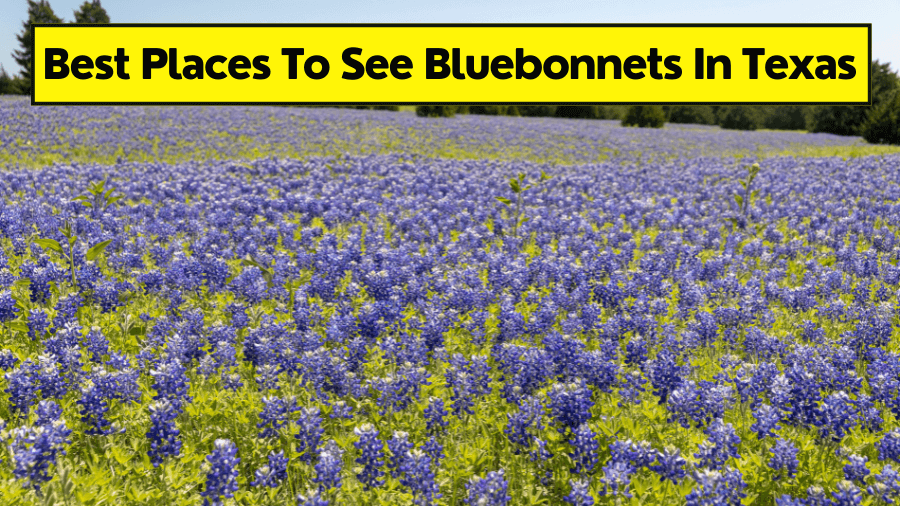Nothing says spring in Texas like a field of bluebonnets stretching as far as you can see.
For a few magical weeks each year, highways, hillsides, and parks across the state explode with bright blue flowers.
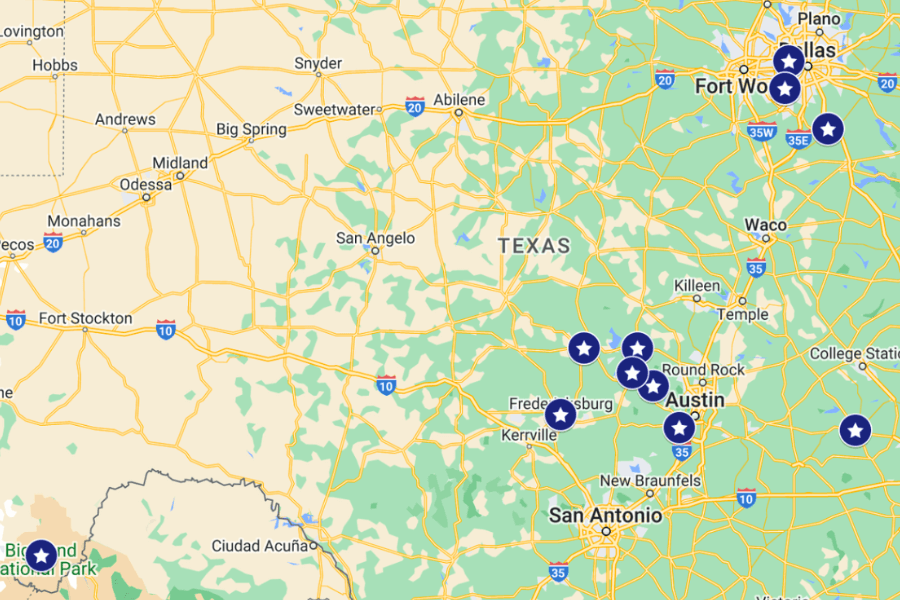
Whether you’re up for a scenic road trip, a peaceful nature walk, or just a quick photo-op, there are plenty of amazing spots to catch the blooms.
From hidden trails to famous drives, this guide will take you to the best bluebonnet views this spring.
We’ve divided this guide up into regional sections. Use the table of contents below to jump to your area!
Texas Hill Country + Austin, San Antonio and Houston
Bluebonnets begin to bloom here in mid-March / mid-April.
1. Llano
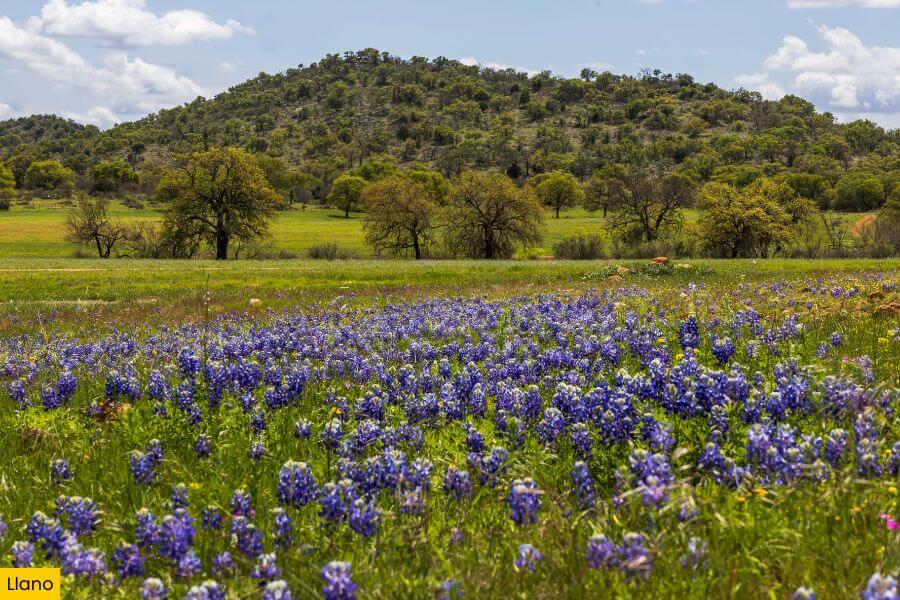
Llano sits in the Hill Country about 84 miles northwest of Austin and is one of the best spots to see bluebonnets in the spring.
Highway 16 is the place to go, especially the stretch between Llano and Fredericksburg, where the fields explode with blue from late-March to mid-April.
For a fun stop, drive to Buchanan Dam, where you will see bluebonnets right by the water and snap some amazing photos.
Go in the morning or late afternoon for the best light, and if you want even more wildflowers, take a detour on FM 501 toward the tiny town of Pontotoc.
2. Muleshoe Bend Recreation Area
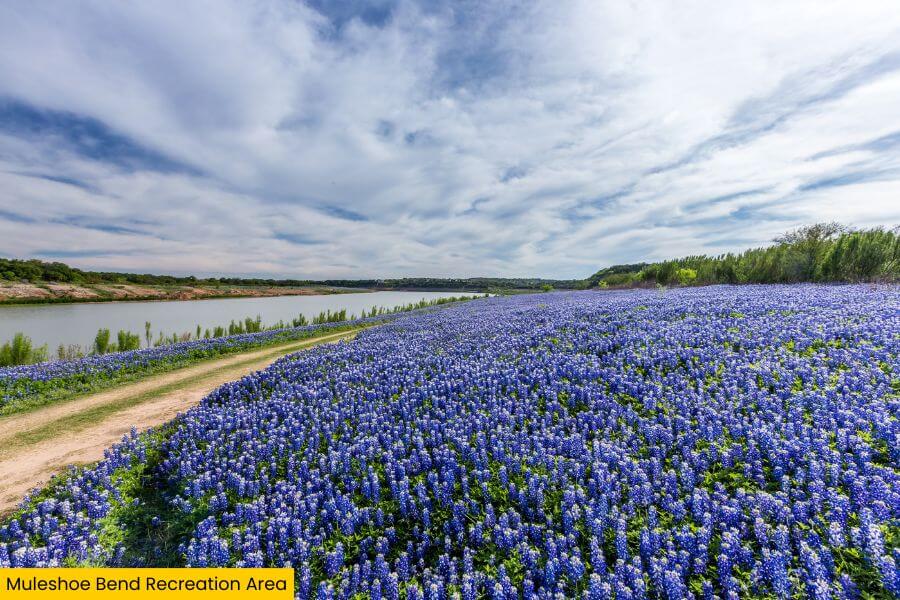
If you want to see bluebonnets covering entire hillsides, Muleshoe Bend Recreation Area is the place to go.
Located on the shores of Lake Travis, about an hour from Austin, this spot explodes with bluebonnets in the spring, creating a massive sea of blue.
The best way to take it all in is by walking the easy trails that wind through the fields or bringing a picnic to enjoy right in the middle of the flowers.
For the most jaw-dropping views, aim for a sunny morning in late March or early April when the lake sparkles and the bluebonnets look their brightest.
3. Burnet
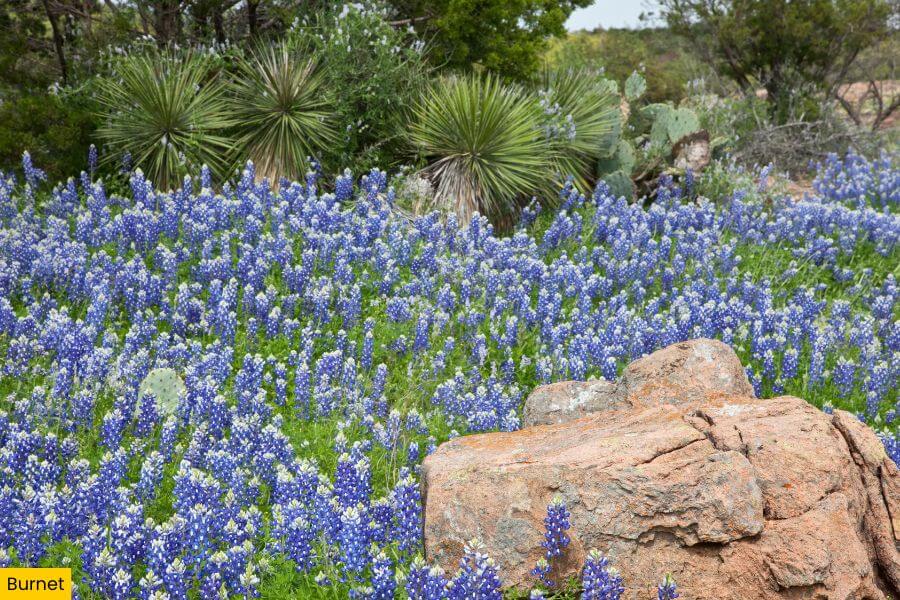
Burnet calls itself the “Bluebonnet Capital of Texas” because this city goes all out when wildflower season hits.
Every April, the Bluebonnet Festival takes over downtown with a parade, live music, and tons of local vendors, making it the perfect excuse for a spring road trip.
For the best bluebonnet views, drive along Highway 29 or head to Inks Lake State Park, where you’ll find trails lined with flowers.
If you time it right, you can catch the sunset over the lake while surrounded by fields of blue, which is about as Texas as it gets.
4. Marble Falls
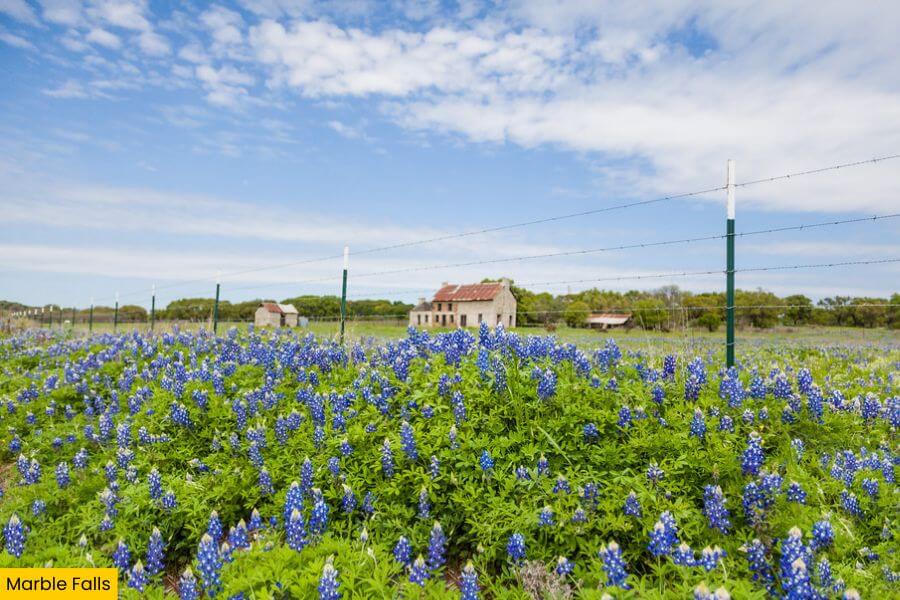
Marble Falls is another must-stop for bluebonnet season, and it’s extra special because you can pair the flowers with some of the most delicious pies in Texas.
Start with a drive along Highway 281, where you’ll spot patches of bluebonnets right off the road, then head to Turkey Bend Recreation Area for even bigger fields of flowers.
If you want a picture-perfect scene, stop by Bluebonnet House, an old abandoned stone home just outside the town that sits in a field of wildflowers every spring.
After soaking in the scenery, swing by Blue Bonnet Café for a slice of their famous pie, which has been a Marble Falls staple for decades.
5. Fredericksburg
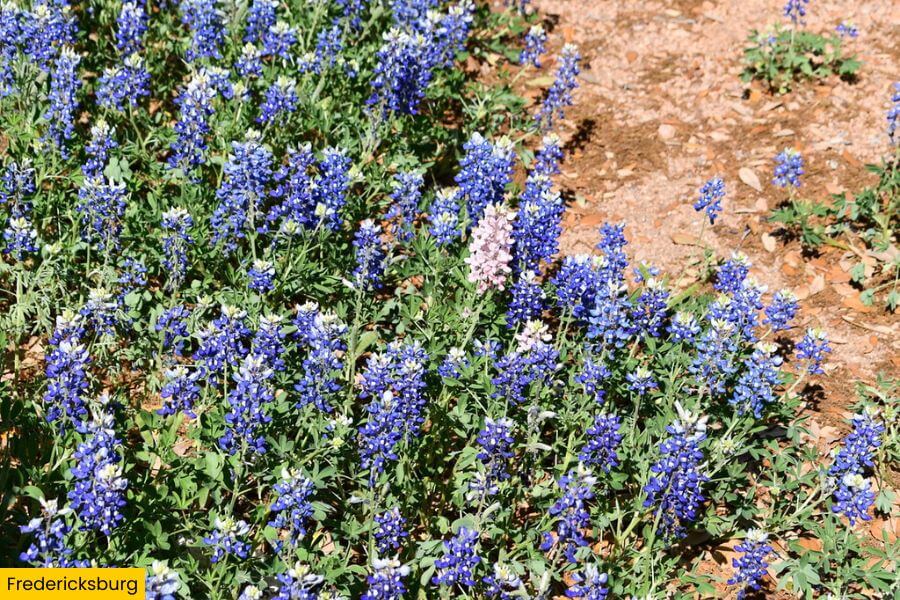
Fredericksburg is full of Texas charm, and in the springtime, you’ll find wildflowers popping up all over town and along the highways leading in.
One of the best sites to see them is Wildseed Farms, a massive wildflower farm just east of town where you can walk through fields of bluebonnets and other blooms.
For a more natural setting, drive along Ranch Road 965 toward Enchanted Rock, where bluebonnets line the roadside with giant pink granite in the background.
While you’re in town, grab a pastry from one of the German bakeries on Main Street to make your wildflower hunting trip extra sweet.
6. Brenham
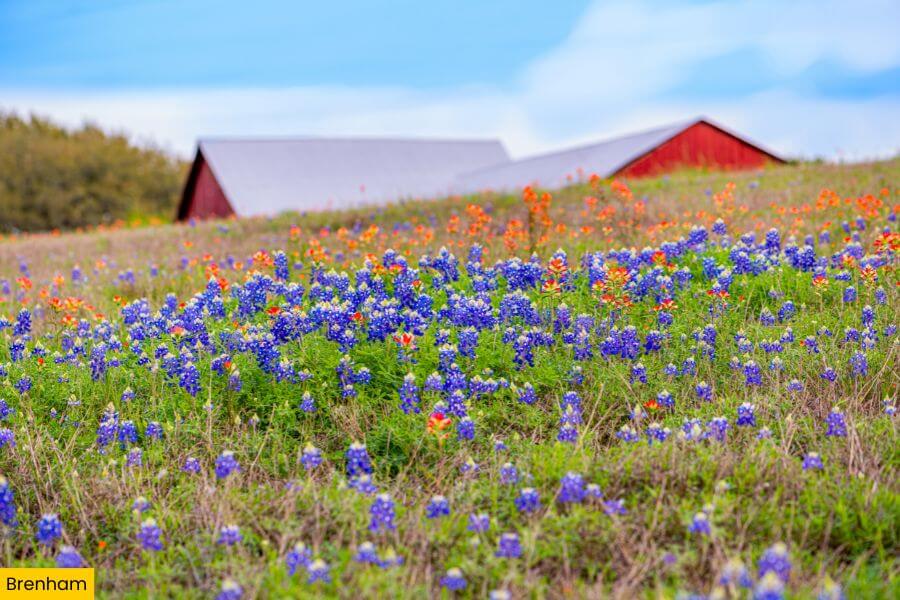
Brenham is a Bluebonnet hotspot, and the best part is that you can enjoy the flowers with a scoop of Blue Bell ice cream straight from the source.
Take a drive along the Brenham Wildflower Loop, a scenic route that winds through rolling fields packed with bluebonnets and some Indian paintbrushes.
Head over to Old Baylor Park in Independence and walk among the blooms with historic ruins in the background.
After a day of flower-spotting, swing by the Blue Bell Creamery for a big bowl of homemade vanilla ice cream.
7. Lady Bird Johnson Wildflower Center
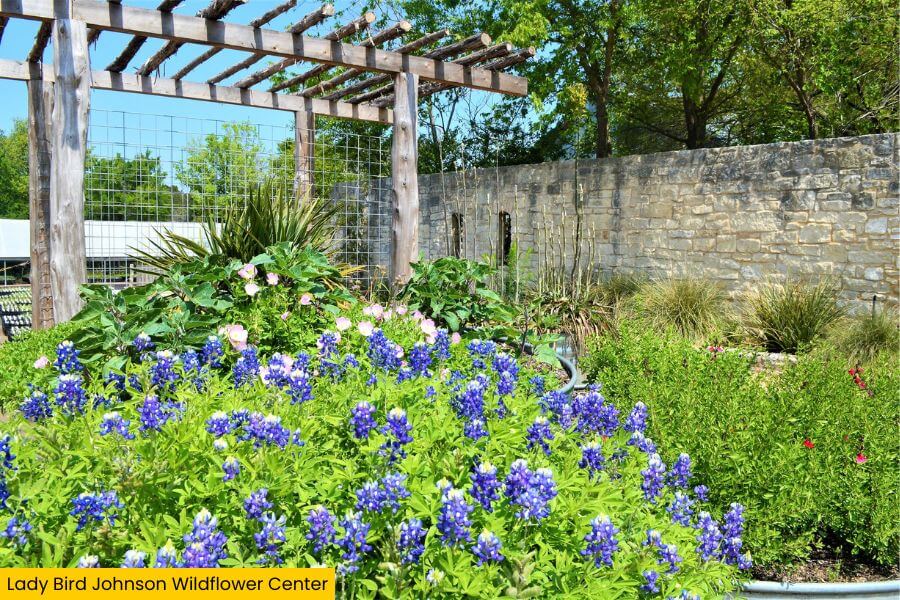
If you want a guaranteed bluebonnet sighting without hunting them down on the highways, the Lady Bird Johnson Wildflower Center in Austin is the place to go.
This botanical garden is dedicated to Texas wildflowers, and in the spring, its meadows burst with bluebonnets, along with other blooms like pink evening primrose.
You can stroll along the trails, climb the observation tower, or just relax in the middle of the flowers without worrying about trespassing on someone’s ranch.
It’s a great stop if you’re short on time or just want to soak in the wildflowers without leaving the city.
North including Dallas-Fort Worth
Bluebonnets begin to bloom here in April.
8. Ennis
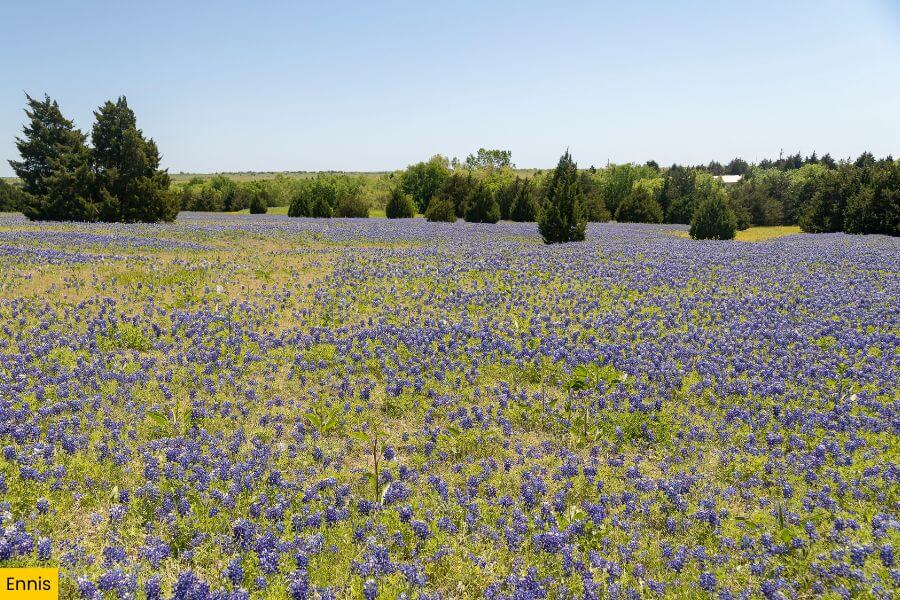
Ennis takes Bluebonnet season seriously since it’s the only place in Texas with an official Bluebonnet Trail.
Every April, more than 40 miles of mapped driving routes wind through the countryside, with some of the best flower-covered fields along Sugar Ridge Road and near Lake Bardwell.
The Ennis Bluebonnet Festival brings in live music and food trucks, making it the ideal weekend stop if you want bluebonnets and a little fun.
Check the Ennis Bluebonnet Trails map online before you go—it’s updated regularly with the best spots, so you don’t waste time guessing where to go.
9. Irving
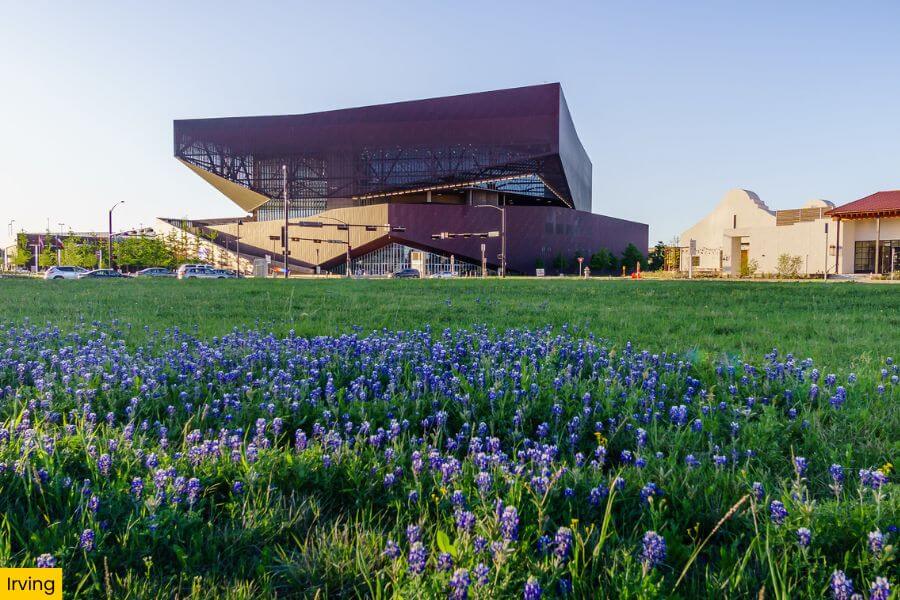
If you’re in the Dallas area and don’t have time for a long road trip, Irving has some surprisingly great bluebonnet areas.
One of the best places to see them is along Highway 114, where huge patches of flowers pop up every spring.
You can also head to Campion Trail, a scenic greenbelt along the Trinity River, where bluebonnets line the paths and make for a perfect afternoon walk or bike ride.
It’s proof that you don’t have to leave the city to get your bluebonnet fix—sometimes, they’re blooming right in your own backyard.
10. Cedar Hill State Park
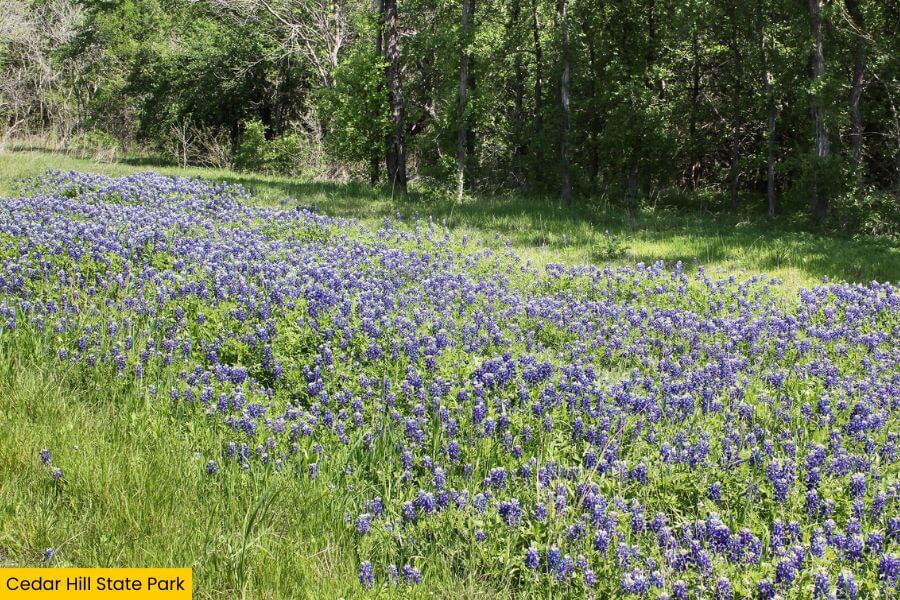
Cedar Hill State Park is one of the best places near Dallas to see bluebonnets in a more natural setting without having to drive hours into the countryside.
The fields around Joe Pool Lake explode with color in the spring, and you’ll find plenty of spots along the hiking trails where bluebonnets grow.
For an extra-cool backdrop, check out Penn Farm, an old historic homestead inside the park where wildflowers blossom around rustic barns and fences.
It’s a great spot for a relaxed hike, a picnic by the lake, or simply soaking up the Texas spring weather.
South
Bluebonnets begin to bloom here in February.
11. Big Bend National Park
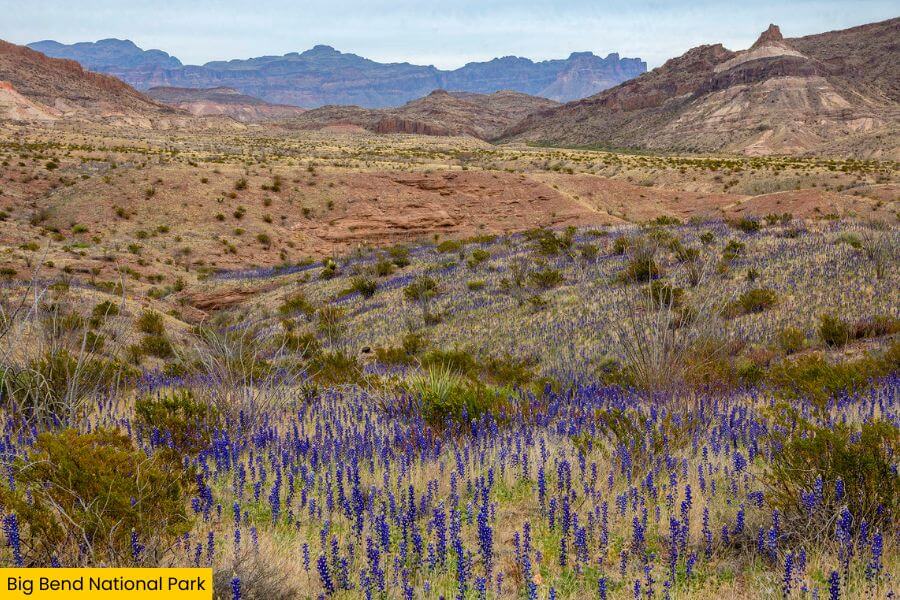
Big Bend National Park isn’t the first place most people think of for bluebonnets, but the ones here are a whole different kind of stunning.
Unlike the shorter Hill Country bluebonnets, Big Bend’s variety can grow up to three feet tall, stretching along the desert roads with mountains in the background.
The best place to see them is along Ross Maxwell Scenic Drive, where they line the highway in deep blue waves, especially after winter.
If you’ve ever wanted to see bluebonnets in the middle of a rugged West Texas landscape, this is the place to do it.
Related Posts

